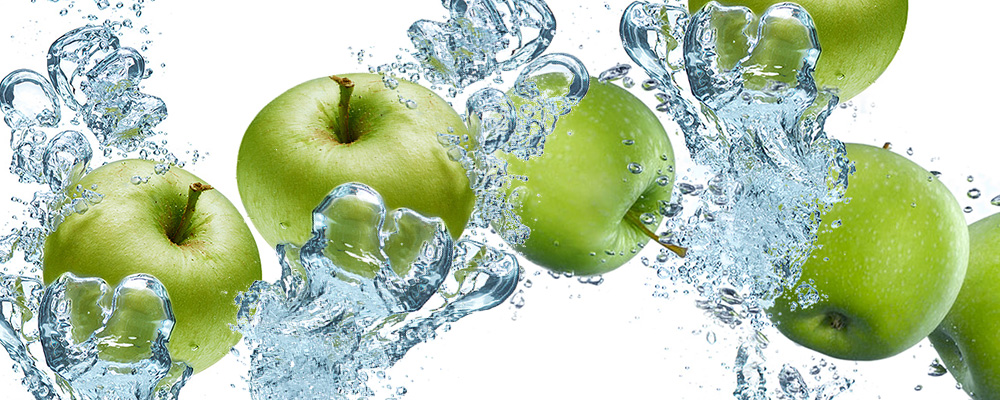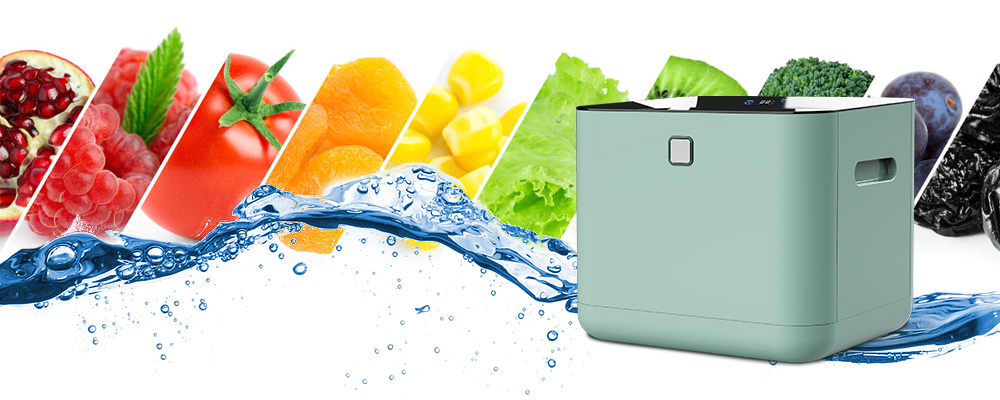Household fruit and vegetable cleaning machines have become increasingly popular kitchen appliances in recent years. With the diversification of dietary habits and a heightened awareness of health, an increasing number of people are taking an interest in these devices. A good cleaning machine not only removes dirt but also eliminates surface pesticide residues and reduces bacterial levels, thereby playing a crucial role in ensuring food safety. Among the washing technologies available for fruit and vegetable washing equipment, pulsator cleaning, bubble cleaning, and ultrasonic cleaning are the most common. The following comparison of their operating principles, cleaning efficacy and user experience is intended to assist consumers and purchasers and to provide a basic framework idea for brands seeking to develop ODM fruit and vegetable cleaning machines.
Pulsator Cleaning
Pulsator cleaning technology is derived from the operating principle of traditional washing machines. Its core lies in using a high‑speed rotating pulsator to generate a powerful vortex within the container. Fruit and vegetables immersed in this vortex are affected by the shear forces of the water and mechanical friction created by collisions between items, which strip away dirt from surfaces and crevices. The greater the vortex speed, the stronger the cleaning power, and the process is visually transparent. However, traditional pulsator systems employ rigid paddles and a simple high‑speed rotation pattern to produce the flow, which, while effective for hard, bulky produce (such as potatoes or carrots), can easily bruise or damage softer fruits and leafy vegetables (strawberries, lettuce, etc.) through violent collision with the pulsator and container walls.
In recent years, several equipment manufacturers have proposed upgraded pulsator solutions to make this method more suitable for delicate produce. For example, ATYOU Health Tech’s R&D team has developed a silicone‑flexible fibre pulsator and optimised the rotation patterns to mimic the gentle, three‑dimensional action of hand‑washing. This upgraded pulsator cleaning creates a softer yet effective vortex, suitable for a wider variety of produce. Trials have shown that this approach yields superior cleaning results while minimising damage to fruit and vegetables.
Bubble Cleaning
Bubble cleaning technology can be divided into two main techniques: bubble‑tumble cleaning and nanobubble cleaning. Bubble‑tumble cleaning injects a large volume of air into the water via an air pump; the bubbles collide with the produce, causing it to tumble, and the combined action of shear forces and friction dislodges mud and grime. The intensity and direction of the bubble flow can be finely controlled, ensuring effective cleaning without excessive agitation, thereby protecting the integrity of the produce.
Nanobubble cleaning, by contrast, uses a specially designed gas–liquid mixing device to disperse gas into ultra‑fine bubbles, typically dozens to hundreds of nanometres in diameter, which then mix uniformly with the water flow. Because of their minute size, these micro‑bubbles can penetrate intricate surface contours and pores, flushing away contaminants and pesticide residues. Moreover, nanobubble water exhibits distinctive surface charge properties and osmotic pressures that enhance physical antibacterial action and aid in stain removal. This makes it an excellent green cleaning technology.

Ultrasonic Cleaning
Ultrasonic cleaning employs a transducer to generate high‑frequency vibrations—typically above 20kHz—in the water, creating cavitation bubbles that collapse and release instantaneous high‑pressure micro‑jets, deeply cleaning both surfaces and fine gaps of fruit and vegetables. Ultrasonic cleaning effectively removes tiny particles and stubborn residues while operating in a gentle water environment that helps preserve the integrity of the produce. Its outstanding cleaning power and bactericidal ability have long been applied in fields such as medical instruments and precision components. Now, as technological costs decrease, ultrasonic cleaning is becoming increasingly viable for more household fruit and vegetable cleaners. Nevertheless, the technical requirements of an ultrasonic cleaning machine are still high, and implementation is complicated.
When comparing these three techniques in terms of cleaning efficacy, cost‑effectiveness and implementation difficulty, each offers distinct advantages. While developers continually refine all three methods to achieve better performance and cost balance. In practical product design, R&D teams often adopt a modular integration approach, combining or switching between modes to suit different product types. Key design considerations include the efficiency of the drive system, the durability of critical components, and control of noise and energy consumption. Additionally, ease of replacement for wear parts, material safety of the machine body, and an intuitive intelligent control interface are crucial for enhancing user experience. With extensive R&D expertise and manufacturing capabilities across these areas, we can provide bespoke technical solutions—supporting the entire process from principle validation to small‑batch trials and mass production—backed by a comprehensive quality inspection system to ensure the performance and reliability of every machine.
In summary, household fruit and vegetable cleaning machines utilising pulsator, bubble and ultrasonic cleaning each possess unique characteristics. The choice of the optimal technical solution should be guided by the type of produce to be cleaned, frequency and budget. The ATYOU Health Tech team, with two decades of OEM/ODM disinfection and cleaning equipment manufacturing service experience and a proven track record in developing and producing, is well placed to offer complete professional solutions. Please feel free to contact us for more detailed information.


